The King of Fighters (KOF) is a series of fighting games by SNK that began with the release of The King of Fighters '94 in 1994. The series was developed originally for SNK's Neo Geo MVS arcade hardware. This served as the main platform for the series until 2004 when SNK retired it in favor of the Atomiswave arcade board. Two King of Fighters games were produced for the Atomiswave platform (The King of Fighters Neowave and The King of Fighters XI) before SNK decided to discontinue using it for the series. The series' most recent arcade hardware is the Taito Type X2, first used with the release of The King of Fighters XII. Ports of the arcade games and the original The King of Fighters games have been released for several video game consoles. The latest entry in the series, The King of Fighters XV, was released in February 2022.
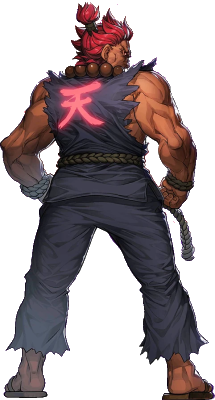
Akuma, known in Japan as Gouki, is a fictional character and the secondary antagonist of the Street Fighter series of fighting games created by Capcom. Akuma made his debut in Super Street Fighter II Turbo as a secret character and boss. In the storyline of the Street Fighter video games, he is the younger brother of Gouken, Ryu's and Ken's master. In some games, he also has an alternate version named Shin Akuma or Shin Gouki in Japanese and Oni Akuma in Super Street Fighter IV: Arcade Edition. Since his debut, Akuma has appeared in several subsequent titles and has been praised by both fans and critics.
SNK vs. Capcom, or alternately Capcom vs. SNK, is a series of crossover video games by either Capcom or SNK featuring characters that appear in games created by either company. Most of these are fighting games, and take on a similar format to Capcom's own Marvel vs. Capcom series, in which the players create teams of fighters and have them fight each other. Games in this series either contain SNK vs. Capcom or Capcom vs. SNK in their titles, with the first company named denoting the company behind the game's development.

Marvel vs. Capcom is a series of crossover fighting games developed and published by Capcom, featuring characters from their own video game franchises and comic book series published by Marvel Comics. The series originated as coin-operated arcade games, though later releases would be specifically developed for home consoles, handhelds, and personal computers.
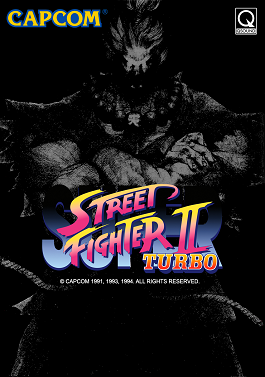
Super Street Fighter II Turbo is a fighting game released for the arcades by Capcom in Japan on February 23, 1994, in North America on February 23 and March 26, 1994 (beta) and in Europe in March 1994 (beta). It is the fifth installment in the Street Fighter II sub-series of Street Fighter games, following Super Street Fighter II: The New Challengers. Like its predecessor, it ran on the CP System II hardware.

Street Fighter Alpha 3, released as Street Fighter Zero 3 in Japan, Asia, South America, and Oceania, is a 2D fighting game originally released by Capcom for the arcade in 1998. It is the third and final installment in the Street Fighter Alpha sub-series, which serves as a sequel to Street Fighter Alpha 2, and ran on the same CP System II hardware as previous Alpha games. The game was produced after the Street Fighter III sub-series has started, being released after 2nd Impact, but before 3rd Strike. Alpha 3 further expanded the playable fighter roster from Street Fighter Alpha 2 and added new features such as selectable fighting styles called "isms".
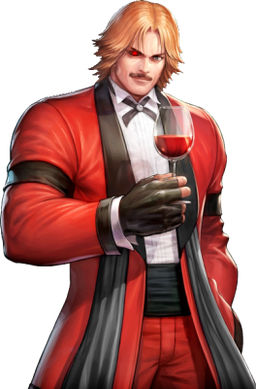
Rugal Bernstein is a video game character created by SNK. First introduced in The King of Fighters '94, he is a recurring boss in The King of Fighters fighting game series, appearing in some titles as an enhanced version called Omega Rugal. As the host of the tournaments from The King of Fighters '94 and '95, Rugal plans to turn all the competitors from the tournament into stone statues as part of his collection. Despite his death in '95, Rugal is still featured in The King of Fighters titles which do not contain a storyline. He has also been featured in the Capcom vs. SNK series as a boss character.
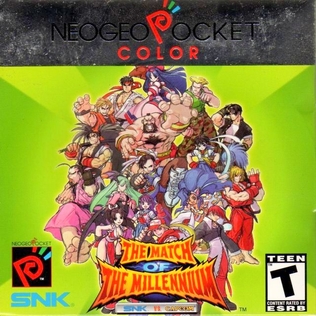
SNK vs. Capcom: The Match of the Millennium is a crossover fighting game developed and published by SNK for the Neo Geo Pocket Color in 1999.

The King of Fighters '98: The Slugfest, known in Japan as The King of Fighters '98: Dream Match Never Ends , is a fighting game released by SNK for the Neo Geo arcade and home consoles in 1998. It is the fifth game in The King of Fighters series. It was advertised by SNK as a "special edition" of the series, as it featured most of the characters who appeared in the previous games.

SNK vs. Capcom: SVC Chaos is a 2003 fighting game produced by Playmore for the Neo Geo arcade and home platform. It was then later ported to the PlayStation 2 and Xbox, although only the Xbox port was released in North America and both platforms were released in Japan and PAL regions.

Garou: Mark of the Wolves is a 1999 fighting game produced by SNK, originally for the Neo Geo system and then as Fatal Fury: Mark of the Wolves for the Dreamcast. It is the eighth installment of the Fatal Fury series.

Marvel vs. Capcom: Clash of Super Heroes is a crossover fighting game developed and published by Capcom. It is the third installment in the Marvel vs. Capcom series, which features characters from Capcom's video game franchises and characters from Marvel Comics. The game debuted in Japanese and North American arcades in 1998. It was ported to the Dreamcast in 1999 and the PlayStation in 2000. The game was re-released in 2012 for the PlayStation 3 and Xbox 360 as part of the Marvel vs. Capcom Origins collection.
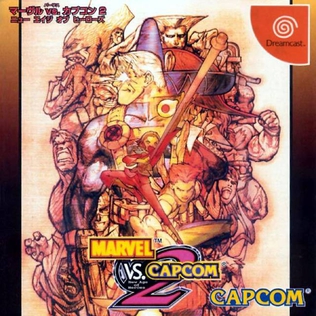
Marvel vs. Capcom 2: New Age of Heroes is a crossover fighting game developed and published by Capcom. It is the fourth installment in the Marvel vs. Capcom series, which features characters from both Capcom's video game franchises and comic book series published by Marvel Comics. Originally released in Japanese arcades in 2000, the game received ports to the Dreamcast, PlayStation 2, PlayStation 3, Xbox, Xbox 360, and iOS devices over the span of twelve years.

Street Fighter III: 3rd Strike - Fight for the Future is a 2D fighting game developed and published by Capcom, originally released in 1999 for the arcades and in 2000 for the Dreamcast. In 2004 it was released on the PlayStation 2 and Xbox. A downloadable online version titled Street Fighter III: 3rd Strike Online Edition was released on PlayStation Network and Xbox Live Arcade in 2011.

The King of Fighters 2002: Challenge to Ultimate Battle(KOF 2002, or KOF '02) is a fighting game developed by Eolith and published by Eolith and Playmore for the Neo Geo in 2002. It is the ninth game in The King of Fighters series and the second one to be produced by Eolith. The game was ported to the Dreamcast, PlayStation 2, and the Xbox, where in the PS2 and Xbox versions were released in North America in a two-in-one bundle with the following game in the series, The King of Fighters 2003. The Dreamcast port was released only in Japan, it was also the last game in the series to be officially released for the Japanese Dreamcast.
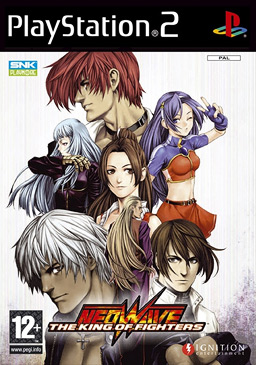
The King of Fighters Neowave(KOF Neowave, or KOF NW) is a 2D fighting game produced by SNK Playmore and released as a coin-operated arcade game for Sammy's Atomiswave hardware in 2004. It was the first game SNK Playmore produced for the Atomiswave. This is a remake of The King of Fighters 2002 with a major change of roster and stages, the game was also made on the PlayStation 2 and Xbox. The PS2 version was released only in Japan and the PAL region, the Xbox version was released both in Japan and North America. The North American version was released on April 18, 2006. In 2020, a Dreamcast homebrew adaptation of the arcade version was also made possible due to the Dreamcast sharing almost identical hardware with its Atomiswave cousin. The character artwork was done by Tomokazu Nakano. In Japan, it was the last game to be released for the Xbox.

Capcom vs. SNK: Millennium Fight 2000, also known as simply Capcom vs. SNK in international releases, is a 2000 head-to-head fighting game produced by Capcom originally released as a coin-operated arcade game for Sega's NAOMI hardware and later ported to the Dreamcast. It is the second game in the SNK vs. Capcom series and the first game in the series to be released for the arcade.
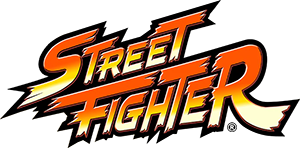
Street Fighter is a Japanese media franchise centered on a series of fighting games developed and published by Capcom. The first game in the series was released in 1987, followed by six other main series games, various spin-offs and crossovers, and numerous appearances in other media. Its best-selling 1991 release Street Fighter II established many of the conventions of the one-on-one fighting genre.

Capcom Fighting Evolution, released in Japan and Europe as Capcom Fighting Jam, is a 2004 head-to-head fighting game from Capcom. It was originally released as a coin-operated arcade game for the Namco System 246 hardware and ported to the PlayStation 2 and Xbox. The game features characters from three different incarnations of the Street Fighter series, as well as characters from the Darkstalkers series and the CPS III arcade game Red Earth, with each character employing the fighting system from the game which they represent.

















